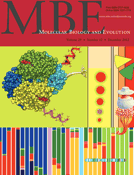
Evolutionary Bioinformatics
Scope & Guideline
Innovating the intersection of biology and computation.
Introduction
Aims and Scopes
- Bioinformatics Applications in Genomics:
The journal publishes research that employs bioinformatics tools and methodologies to analyze genomic data, including sequencing, gene expression, and genetic variation, to understand evolutionary processes and disease mechanisms. - Systems Biology and Multi-Omics Approaches:
A significant portion of the research emphasizes multi-omics strategies, integrating genomic, transcriptomic, proteomic, and metabolomic data to provide comprehensive insights into biological systems and their evolutionary dynamics. - Evolutionary Dynamics of Pathogens:
The journal features studies on the evolutionary dynamics of pathogens, particularly viral and bacterial species, exploring their genomic adaptations, evolutionary rates, and interactions with host organisms. - Translational Bioinformatics in Medicine:
Research often bridges basic bioinformatics with clinical applications, such as identifying biomarkers for diseases or understanding the genetic basis of complex traits in human health. - Ecological and Environmental Genomics:
The journal addresses ecological and evolutionary genomics, focusing on how environmental factors influence genetic diversity and evolutionary adaptations in various species.
Trending and Emerging
- Integration of Machine Learning in Bioinformatics:
There is an increasing trend towards applying machine learning algorithms to bioinformatics, enhancing predictive modeling capabilities in genomics and helping to uncover complex patterns in large datasets. - Focus on Host-Pathogen Interactions:
Recent publications indicate a growing interest in understanding the interactions between hosts and pathogens, particularly in the context of viral infections and antibiotic resistance, highlighting the importance of these interactions in evolutionary studies. - Exploration of Non-Coding RNA and Epigenomics:
Research is increasingly focusing on the roles of non-coding RNAs and epigenetic modifications in gene regulation and evolution, recognizing their significance in complex traits and disease mechanisms. - Environmental Genomics and Microbiome Studies:
Emerging themes include the study of environmental genomics and the human microbiome, emphasizing how ecological factors influence genetic diversity and evolutionary processes, particularly in response to climate change. - Computational Drug Discovery and Repurposing:
There is a notable increase in studies that utilize computational methods for drug discovery and repurposing, particularly in the context of emerging diseases and public health challenges, showcasing the practical applications of bioinformatics in medicine.
Declining or Waning
- Traditional Phylogenetic Methods:
While phylogenetics remains a core component of evolutionary studies, traditional methods based solely on sequence alignment and tree construction have seen reduced emphasis, with a shift towards more integrative and computationally intensive approaches. - Single-Species Genomic Studies:
Research focusing exclusively on single species genomics without comparative analysis has become less prevalent, as more studies now emphasize comparative genomics across multiple species to derive evolutionary insights. - Static Models of Evolution:
Static models of evolution that do not account for dynamic environmental interactions or genomic plasticity are increasingly viewed as limited, leading researchers to adopt more complex models that incorporate ecological and evolutionary interactions. - Basic Sequence Analysis Techniques:
Basic bioinformatics techniques such as simple sequence alignment or basic statistical analyses are being overshadowed by more sophisticated methods, including machine learning and network analyses, resulting in a decline in publications focused on these traditional techniques.
Similar Journals

MOLECULAR BIOLOGY AND EVOLUTION
Fostering Innovation in Genetics and Evolutionary StudiesMOLECULAR BIOLOGY AND EVOLUTION, published by Oxford University Press, stands as a premier journal in the fields of molecular biology, evolutionary biology, and genetics. With a proud history dating back to its inception in 1983, the journal spans a convergence period through 2024, providing an exceptional platform for disseminating high-quality research. The journal is recognized in the top Q1 quartile across multiple categories, including Ecology, Evolution, Behavior and Systematics, and Genetics, reflecting its significant impact and relevance in these disciplines. With impressive Scopus rankings—10th in Ecology and Evolution, 12th in Genetics, and 22nd in Molecular Biology—it serves as a vital resource for scholars aiming to stay informed on cutting-edge developments in evolutionary processes and molecular genetics. While it currently does not offer open access, its curated contents resonate well with an audience of researchers, professionals, and students deeply interested in accelerating their understanding of the complexities of life through an evolutionary lens.

JOURNAL OF MOLECULAR EVOLUTION
Bridging Molecular Biology and Evolutionary TheoryThe Journal of Molecular Evolution, published by Springer, is a prestigious peer-reviewed journal dedicated to advancing the understanding of molecular evolution through high-quality research and analysis. With an impact factor establishing it as a leading authority in the field, this journal provides a vital platform for scholars focused on the intricate relationships between molecular biology and evolutionary processes. Featuring a Q1 ranking in Ecology, Evolution, Behavior and Systematics, and significant rankings in Genetics and Molecular Biology, the journal has consistently positioned itself at the forefront of academic discourse since its inception in 1971. Notably, the journal boasts an extensive archive that converges from 1971 to 2024, providing a comprehensive resource for current and future research. Although it operates on a subscription model, the high caliber of contributions ensures that it remains an essential reference point for researchers, professionals, and advanced students eager to deepen their understanding of molecular mechanisms and evolutionary dynamics.

International Journal of Genomics
Shaping the future of genomics with impactful research.International Journal of Genomics is a pivotal open-access publication under the esteemed HINDAWI LTD, dedicated to advancing the fields of genomics, biochemistry, genetics, and molecular biology. Established in 2013, this journal aims to disseminate innovative research findings and foster scholarly dialogue among researchers, professionals, and students alike. With a robust Impact Factor reflective of its commitment to quality, the journal has achieved a Q3 ranking in Biochemistry, Genetics, and Molecular Biology, as well as notable placements in Pharmaceutical Science, indicating its broad relevance and influence in these interconnected fields. The journal is indexed in esteemed databases, ensuring high visibility and accessibility for published works. As an open-access journal, it prioritizes the sharing of knowledge across borders, facilitating greater collaboration and advancement in genomic research globally. Join the academic community in exploring the vast potential of genomics through the International Journal of Genomics, based in Egypt, and reaching audiences worldwide from its London office.

EVOLUTION & DEVELOPMENT
Advancing Knowledge at the Intersection of Evolutionary and Developmental Biology.EVOLUTION & DEVELOPMENT is a prestigious academic journal published by WILEY, focusing on the intricate interplay between evolutionary and developmental processes. With an ISSN of 1520-541X and an E-ISSN of 1525-142X, this journal has established itself as a leading source of scholarly articles since its inception in 1999. It enjoys a Q2 ranking in Developmental Biology and a remarkable Q1 ranking in Ecology, Evolution, Behavior and Systematics, positioning it among the top-tier journals in these fields, as evidenced by its Scopus rankings, notably the 26th percentile in Developmental Biology. Researchers and practitioners benefit from high-quality peer-reviewed articles that push the boundaries of knowledge and foster interdisciplinary collaboration. While open access options are not currently available, the journal's robust visibility and impact factor underscore its importance in advancing understanding within the biological sciences. The editorial objective of EVOLUTION & DEVELOPMENT is to bridge the gap between evolution and development, integrating findings that elucidate the paths of organismal change. The journal is a must-read for anyone dedicated to exploring the complexities of life sciences, making it an invaluable resource for researchers, professionals, and students alike.

Evolutionary Biology
Shaping the Future of Evolutionary ThoughtEvolutionary Biology is a distinguished academic journal published by Springer, focusing on the intricate fields of ecology, evolution, behavior, and systematics. This journal, with the ISSN 0071-3260 and E-ISSN 1934-2845, has established itself as a critical platform for cutting-edge research and innovative ideas that shape our understanding of biological evolution and its implications. Operating from Germany, it ranks in the Q2 quartile in its category for 2023, placing it in the top tier of journals recognized for quality and impact, with a Scopus rank in the 66th percentile among its peers. Despite not being Open Access, this journal ensures comprehensive dissemination of knowledge essential for researchers, professionals, and students passionate about evolutionary studies. With a publication history tracing back to 1993 and converging years up to 2024, Evolutionary Biology continues to significantly impact the academic landscape, fostering dialogue and collaboration across various disciplines within the biological sciences.

GENETICS AND MOLECULAR BIOLOGY
Bridging theory and practice in genetic science.GENETICS AND MOLECULAR BIOLOGY, published by the SOC BRASIL GENETICA, is a prominent journal dedicated to the advancement of knowledge in the fields of genetics and molecular biology. Since its inception in 1998, this Open Access journal has served as a vital platform for researchers, professionals, and students to disseminate their findings and engage with the latest innovations and discoveries. With an impact factor that reflects its growing influence, GENETICS AND MOLECULAR BIOLOGY ranks in the Q3 category for both genetics and molecular biology as of 2023, indicating its position within the academic community. The journal is indexed in Scopus, highlighting its commitment to maintaining rigorous peer-review standards while providing wide-reaching access to quality research. Operating out of Ribeirão Preto, Brazil, it fosters a collaborative environment for academic discourse and research development not only in Brazil but also globally. The journal encourages submissions that explore a wide range of topics in genetics and molecular biology, making it an essential resource for anyone involved in these dynamic fields.

Genes
Connecting researchers to shape the future of genetics.Genes is a leading open-access journal published by MDPI that focuses on advancing the field of genetics and genomics. Established in 2010 and based in Basel, Switzerland, this journal has made significant strides in promoting innovative research in both clinical genetics and molecular biology. With an impact factor reflecting its relevance and quality, Genes has been classified in the Q2 quartile for Genetics and the Q3 quartile for clinical Genetics as of 2023. The journal provides an accessible platform for researchers, professionals, and students to disseminate their findings and explore emerging trends across the genetics landscape. Accessible online since its inception, Genes allows for continuous engagement and collaboration within the scientific community, fostering a deeper understanding of genetic mechanisms and their implications in health and disease.

CURRENT GENOMICS
Navigating the evolving landscape of genetic science.CURRENT GENOMICS is a premier journal published by Bentham Science Publishers that focuses on the expansive field of genomics, including both clinical and molecular genetics. With the ISSN 1389-2029 and E-ISSN 1875-5488, this esteemed journal has been disseminating significant scientific insights since its inception in 2000 and continues to contribute to the field through 2024. Based in the United Arab Emirates, CURRENT GENOMICS boasts a Q3 ranking in both the genetics and clinical genetics categories for 2023, reflecting its growing impact in the scientific community. Although not an open-access journal, it provides valuable content that supports researchers and professionals in navigating the complexities of genetic research and its applications. By publishing original research articles, reviews, and case studies, CURRENT GENOMICS aims to foster a deeper understanding of genomic science and its implications for medicine, thus playing a critical role in the advancement of genetics and biomedical research.

NAR Genomics and Bioinformatics
Exploring the Synergy of Genomics and Computational TechniquesNAR Genomics and Bioinformatics, published by Oxford University Press, is a leading open-access journal that has been at the forefront of research in genomics and computational biology since its inception in 2019. With an impressive impact factor and a consistent ranking in the Q1 category across multiple fields—namely Applied Mathematics, Computer Science Applications, Genetics, Molecular Biology, and Structural Biology—this journal stands as an influential platform for disseminating innovative findings and methodologies. Researchers and professionals have the opportunity to engage with high-quality, peer-reviewed articles that reflect the latest advancements in both theoretical and applied aspects of bioinformatics. The journal's commitment to open access ensures that groundbreaking research is accessible to a global audience, fostering collaboration and knowledge sharing within the scientific community. The country of publication is the United Kingdom, with a dedicated editorial team striving to maintain the highest standards of academic excellence.

Mobile DNA
Connecting Researchers Through Open Access DiscoveriesMobile DNA is a prestigious open-access journal published by BMC, dedicated to advancing the field of molecular biology through the exploration of mobile genetic elements in various organisms. Since its inception in 2010, this journal has played a vital role in disseminating high-quality research, featuring studies that enhance our understanding of genetic diversity, evolution, and the mechanisms of gene regulation. With an impressive Q1 ranking in Molecular Biology and a Scopus ranking of #117 out of 410, Mobile DNA represents a significant outlet for innovative research that fosters collaboration among researchers, professionals, and students alike. Its commitment to open access ensures that cutting-edge findings are readily available to the global scientific community, promoting further research and discovery in this dynamic field. Based in the United Kingdom, Mobile DNA continues to be at the forefront of research innovation, with a converged coverage from 2010 to 2024 that underscores its relevance and impact on contemporary molecular biology.